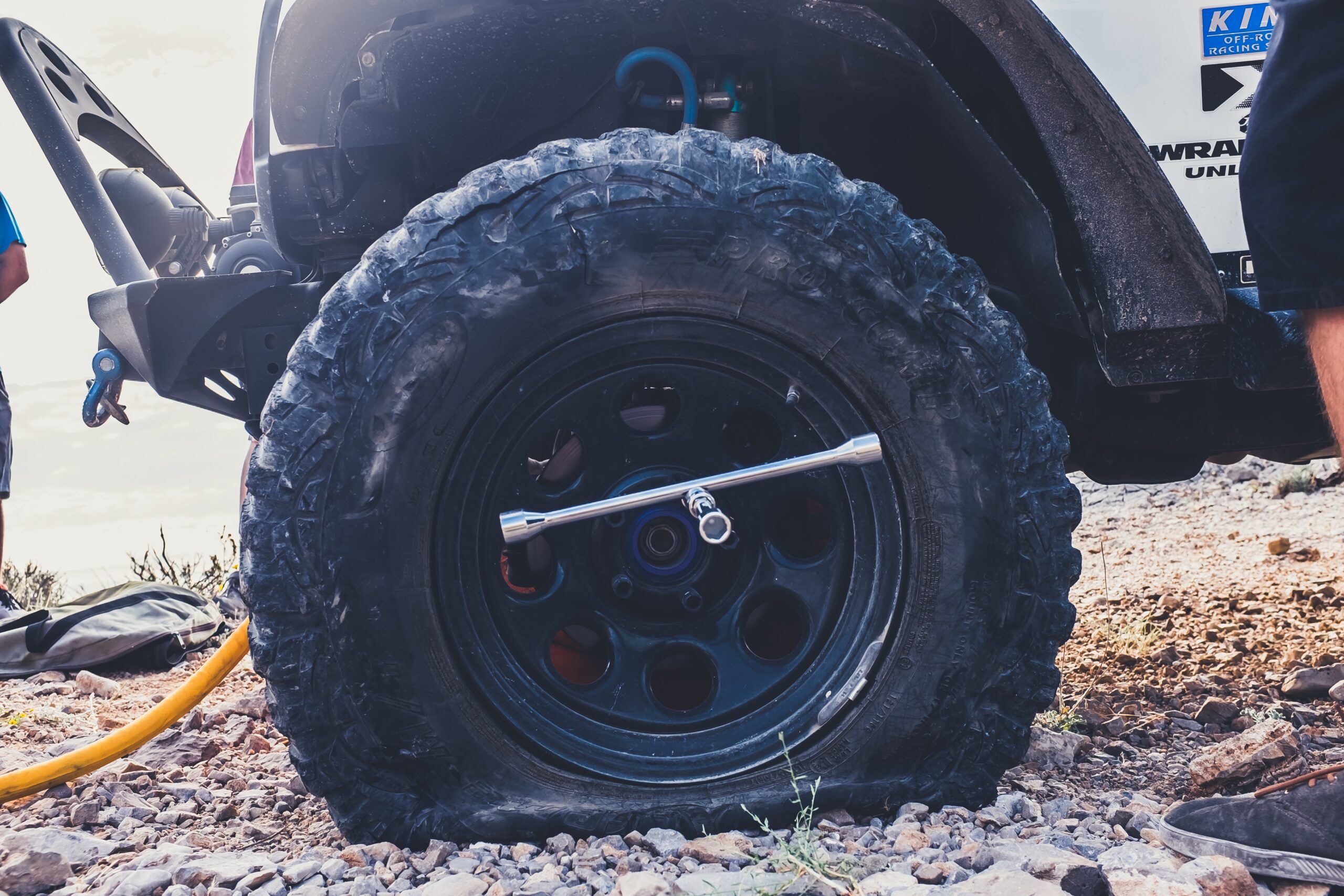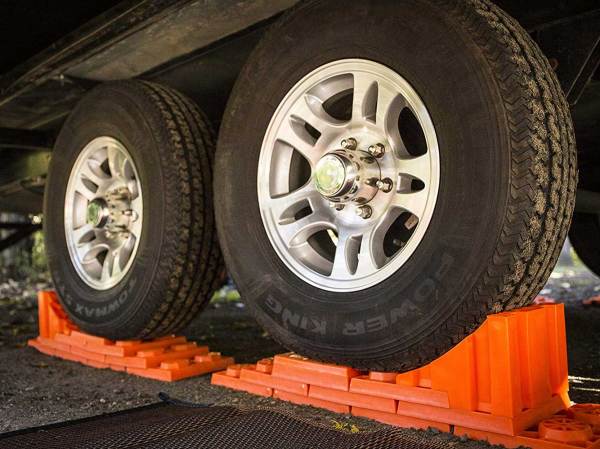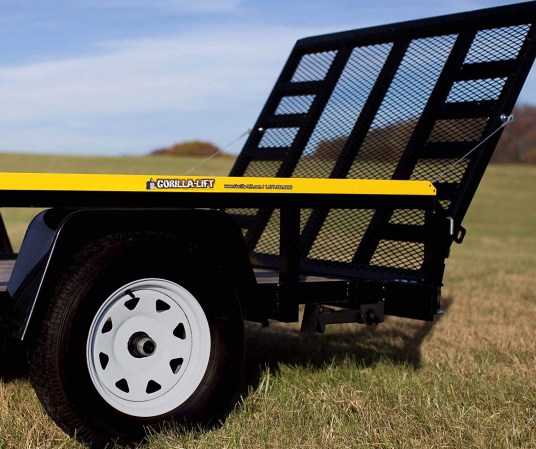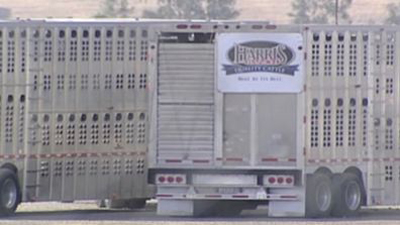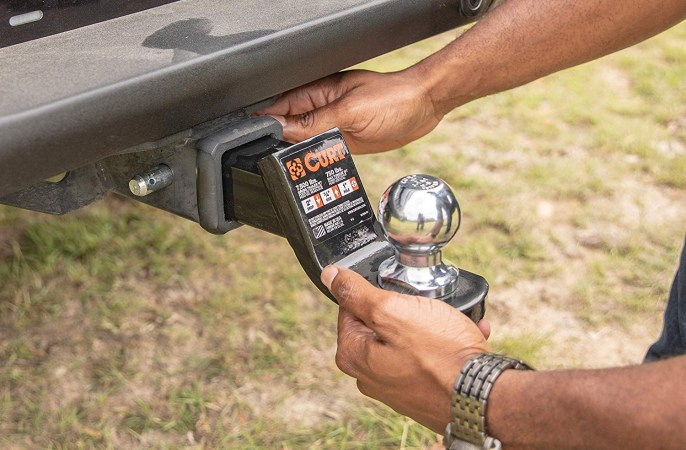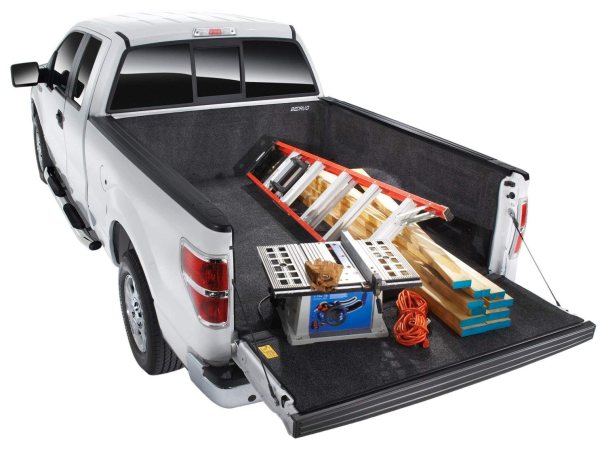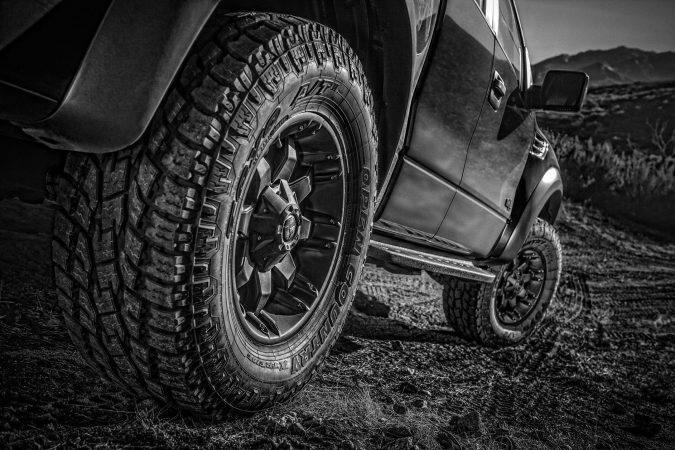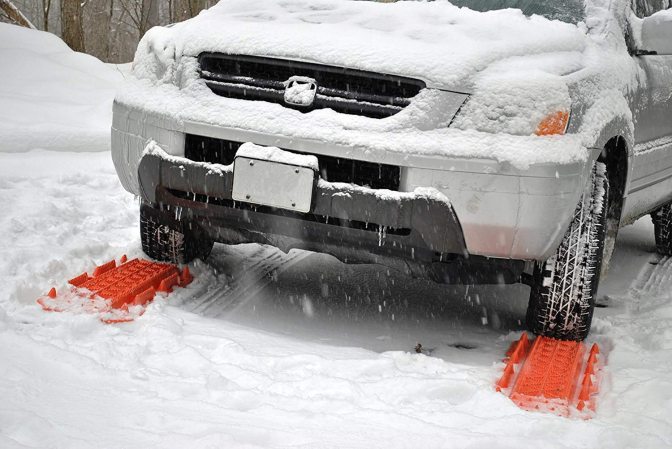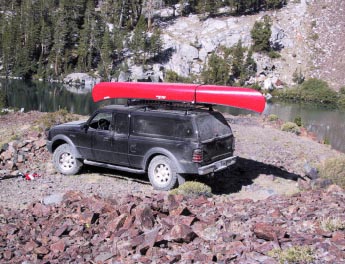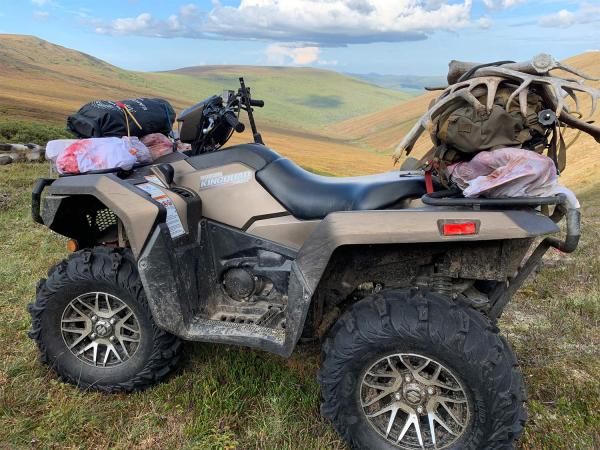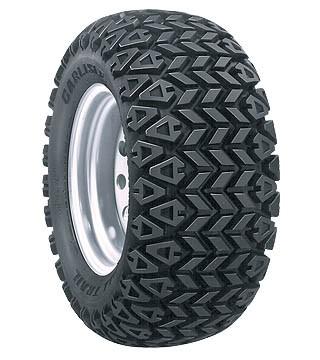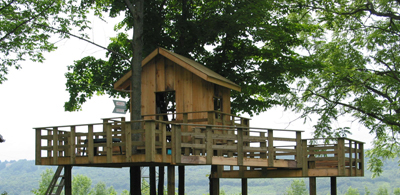We may earn revenue from the products available on this page and participate in affiliate programs. Learn More ›
A flat tire can put a damper on any hunt, especially since AAA likely doesn’t offer roadside assistance to your favorite deer stand. Knowing how to change a tire when there’s no one around to help is an absolute must for anyone who spends time in the backcountry or the back 40. You should practice a tire change at home before heading afield so you know where all the tools are, how to remove the spare, take off the flat, and put on the spare. There’s no worse feeling than searching for tools or being unprepared on a dark, cold night. Here are a few tips and a step-by-step guide for changing a flat.
Don’t Rely on the Manufacturer’s Tire Iron
I recommend buying your own tire iron and keeping it in the truck. Typically stock tire irons from the manufacturer don’t give you as much leverage to unscrew the lug nuts, and they are harder to use than a four-lug tire iron. You could also keep a 1/2-inch cordless impact drill in the truck. Just make sure you have the right fitting to remove the lugs and keep it charged. Impact drills are nice to have handy because 1) they make the job go faster and 2) if you’re towing a trailer and get a flat, some trailer wheels are so short it’s really hard (and sometimes impossible) to use a tire iron to loosen them because it won’t clear the ground.
Buy Another Tire for Your Spare
Many hunters will outfit their trucks with a set of aftermarket tires. If you take your truck off-road, it’s a good idea. But you should also get a fifth tire to replace that donut under your Chevy. Most pickups come with a spare similar to, or exactly the same as, the four standard tires on the showroom model. If you drive into the backcountry it’s worth buying a fifth aftermarket tire to carry as your spare. Those stock tires are made for on-road performance, not wheeling around in the mud.
Hydraulic Jacks Are Perfect for the Mountains
If you can afford one, a hydraulic jack like this one from ARB is ideal for easily lifting your vehicle out of a sticky situation, if you’re on uneven ground, or you can’t find a completely solid surface. Most of these kinds of jacks are rated to lift a portion of your vehicle, not the whole thing, and won’t lift the truck any further once it reaches max capacity. They are invaluable because you can set the jack at different heights. So if you get a flat but the undercarriage of your truck is stuck on a rock, you can free the truck and get it to a flat surface to make the change.
Patch Your Tire If You Can
If you run over a small nail, screw, or tree root that punctures your tire, it’s easier to simply patch the hole with a tire plug kit if you can find the leak. I use a spray bottle filled with soapy water, spray it on the tire, and look for the fizz. Wherever you see the water bubble, that’s where the hole is. The key item you also need to have is a portable air compressor. There are many different types to choose from, and you will get what you pay for. I recommend ARB’s portable model, which will run off your truck battery.
The Tools You Will Need
- Jack
- Lug wrench or tire iron
- Wheel chocks
- Gloves (recommended)
- Portable Air Compressor
Read Next: 5 of the Best Aftermarket Tires for Your ATV
Changing the Tire Step-by-Step
- After detecting a flat tire, find a firm, level surface out of harm’s way. If there is no suitable location nearby, drive slowly until you find a safe place to park.
- Park the truck, and engage the parking brake. Ensure the ignition is turned off, and no one is inside the vehicle.
- Place wheel chocks in front of and behind the tire diagonally opposite from the tire needing to be changed (for example, if the right rear tire is flat, chock the left front tire). Do not use round stones or branches as chocks; tires can push them out of the way when they start rolling. Use purpose-built chocks or improvised chocks, like bricks or similarly-shaped stones.
- Remove the spare tire and tire-changing tools from the vehicle. Essential tools usually include a scissor jack and lug wrench or tire iron.
- Remove the hubcap and any plastic fasteners, if there are any.
- Loosen the lug nuts on the flat tire with one full turn of each nut.
- Position the jack directly underneath the truck’s frame. Some jacks may include a groove down the center of the jacking surface. Make sure to align this groove over top of the pinch weld protruding from the frame.
- Raise the jack just below the truck frame or groove to ensure the jack is properly positioned and aligned.
- Raise the vehicle until the tire is far enough off the ground to spin freely. Do not lift the truck any higher than necessary. The higher a vehicle is off the ground the less stable it becomes.
- Remove the lug nuts, and place them in a safe location.
- Remove the flat tire, and install the spare with the valve stem facing out. If the old tire feels stuck onto the wheel, place one lug nut back onto the wheel, and twist it a few turns, then kick the top of the tire with the sole of your foot. The tire should come loose, and the lug nut will prevent it from flying off and hitting you.
- Replace the lug nuts so they are snug, but do not over tighten them.
- Carefully lower the truck back to the ground. Make sure to return the jack to its original position for easy storage.
- Tighten the lug nuts fully by using an alternating or “star” pattern. Make sure the lug nuts are tight by going around the lug nuts two or three times using the star pattern. Do not tighten the lug nuts in a clockwise or counterclockwise pattern. Doing so will result in some lug nuts being looser than others which could be dangerous.
- Secure the flat tire, and replace the jack and tools.
- If you cannot replace the spare tire within a short driving distance, stop at a service station to ensure the lug nuts are properly torqued.
